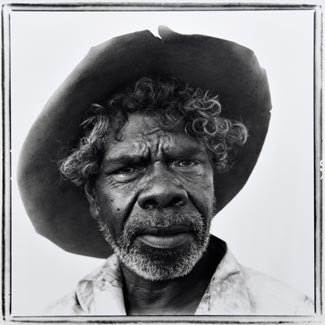On this day: Wave Hill indigenous protest

Please note: this blog contains photos of Aboriginal people who are deceased. Their families have agreed to the publication of their photos.
On 23 August 1966, the Gurindji people walked off the job at Wave Hill Station in the Northern Territory in protest over low wages, bad work conditions and the dispossession of their land.
The 250 men, women and children were led by Vincent Lingiari, a community elder and head stockman at the 26,975sq.km cattle station 600km south of Darwin in the Northern Territory.
A nine-year strike followed that remains the longest in Australian history, ending with the handing back of the land to the Gurindji by the Australian government. This event marked a crucial point in the national Aboriginal land rights movement and led to the establishment of the Aboriginal Land Rights Act (Northern Territory) of 1976, the first law to recognise indigenous land ownership.
Poor conditions for indigenous workers
“Wave Hill was a major step on the long road towards equality between settlers and indigenous Australians,” says Professor Deborah Rose, an anthropologist at the University of New South Wales in Sydney.

Hobbles Danaiyarri worked on the Wave Hill station before the strike. Image credit: Hakam Ludwigson
The Wave Hill station was established in 1914 when the British government gave the land to Vestey, a pastoral conglomerate owned by Lord Vestey of England. The station’s land encompassed Gurindji country and rather than being thrown off the land, its Gurindji people were taken on as workers.
In the 1960s, conditions for the workers were poor. They were paid low wages, if they were paid at all, lived in tin humpies and had no access to running water. The Gurindji people also had no legal claim to the land on which they had lived for tens of thousands of years.
The people’s frustration with their conditions culminated in the walk-off, after which they set up camp at Daguragu, also known as Wattie Creek, around 20km northwest of the station homestead.
“When they walked from the station down to Daguragu, they all went, the women, the kids, the oldies: everybody. Even the dogs walked off,” says Deborah.
The ’90s song From Little Things Big Things Grow was inspired by the Gurindji strike. Source: Youtube
The Gurindji case was different from previous Aboriginal strikes: it was the first to receive strong support from the trade unions and other organisations around the country. Media attention and the involvement of the author Frank Hardy exposed the Gurindji’s grievances to a wide audience.
First land handed back to indigenous Australians
“Finally there was some collaboration between whitefellas and Aboriginals, working together for the lives of Aboriginals,” says Deborah. In Vincent Lingiari they had an astute, dignified leader who was gifted with words. “He could say more with a few words than most people could say in a great long speech,” Deborah adds.
In 1975, the Gurindji were given the leasehold title to 3236sq.km of land. They became the first Aboriginal community to reclaim their land from the Commonwealth Government in a ceremony at Daguragu led by Gough Whitlam.
Inspired by the story, songwriters Paul Kelly and Kev Carmody wrote the song From Little Things, Big Things Grow in the early 1990s around a campfire at Lake Wivenhoe near Brisbane. The song tells the story of the walk-off, Vincent’s trips to the southern states to gain support for the protest, and the subsequent handover of the land.
The song has become an anthem for the reconciliation movement. A new version recorded in 2008, shortly after Kevin Rudd’s official apology to the stolen generations of indigenous Australia, reached number four in the Australian singles chart.
READ MORE:
- On this day: Mabo sets native title precedent
- On this day: Batman treaty annulled
- Top 10 Aboriginal bush medicines
- Indigenous Australia’s flag first flown

